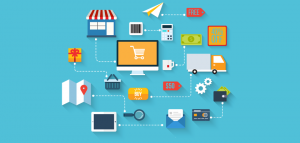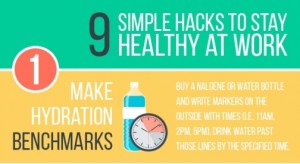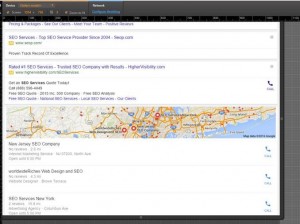— April 26, 2018

In recent times, social selling has grown in popularity because both B2B and B2C companies are using it to get results from their social media participation. Although, there’s still a lot of improvements to be made.
According to CSO Insights 2016 Sales Enablement Optimization Study, 43.1% of respondents felt their social selling training needed improvement. Additionally, 30.4% agreed social selling training required significant redesign; more than any other training process.
The good news is that you can now leverage automation technology to streamline the entire process of your social selling strategy. It doesn’t get better than that.
What is social selling strategy?
A social selling strategy is a plan you put in place to utilize social media to connect with your prospects through your content and interactions with prospects. The main aim of your social selling strategy is to convert your prospects into customers.
That said, here are the 6 steps to implement a social selling strategy with automation technology:
Step 1. Adopt a formal or dynamic approach
Approaching your social selling without a way to measure results is preparation for failure. And what’s the point of the strategy in the first place?
The first step to implementing it is to define the core principles of your workplace and how to measure results.
To get the best out of your social selling, you must define what success and failure means. And also, you must determine how to measure it. Part of this is aligning with your marketing team to get the best insight.
When social selling strategies of sales and marketing are not aligned, 37.2% of salespeople say they are unsure of the primary benefits of using social selling tools. Despite this, only 20.7% of companies have aligned the strategies of the two departments.
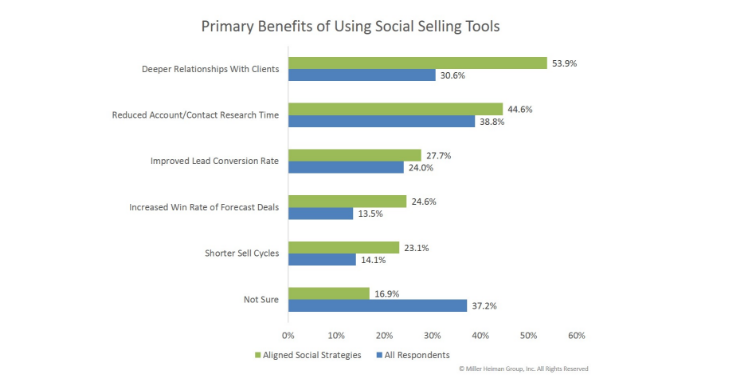
What’s the best way you believe you can serve your customers? Sice the core principles determine how you interact with your prospects, does this mean your strategy should be robotic?
Far from that. In fact, having your core principles means your social selling will be unique. More importantly, there should be room for making improvements as time goes by.
Step 2. Social Prospecting
According to HubSpot, social prospecting is about scouring the social web, identifying potential prospects, and engaging them with content to drive them to your website and move them through your funnel.
With the right tool, you can segment your prospects on social media based on criteria that are important to your business.
With a tool like LinkedIn Navigator, you can import your contacts and search for leads using its many filters.
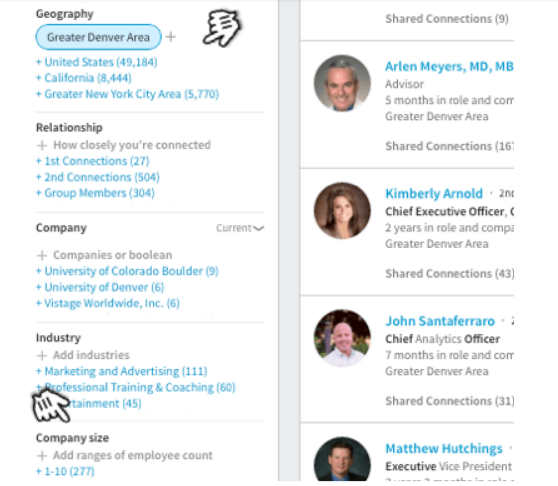
When you use your network’s personal connections on LinkedIn, you can turn a cold outreach to a warm transfer. In fact, 87% of the LinkedIn Sales Navigator customers said they have gained insights into their sales leads they wouldn’t have known otherwise.
According to a LinkedIn report, 34.9% of salespeople rate sales intelligence tools as very impactful while 30.2% rate it as impactful.
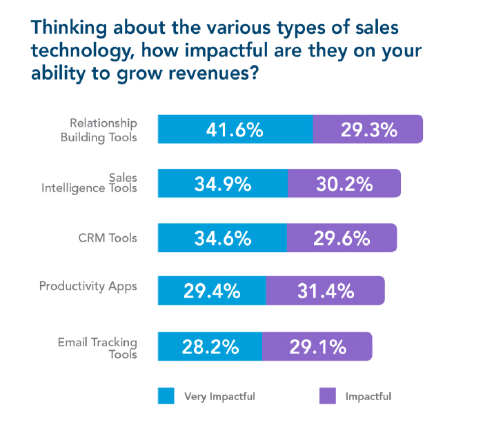
Genesys’ sales reps who use sales navigator increased pipeline growth 2.2 times faster and achieved a 16% higher win rate compared to those who don’t use the navigator.
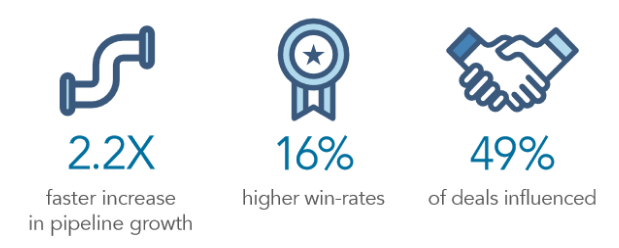
“LinkedIn Sales Navigator has really made prospecting and getting new business so much easier. I can’t imagine any sales professional without it.” – Michelle Tarkowski, Genesys’ Senior Account Executive.
Step 3. Establishing your lead stages
If you’re an organization that moves all leads directly to sales, then you may end up losing leads because most of the leads are not yet ready to buy.
When you create lead stages, you’re able to move your leads a step at a time until they’re ready to buy.
These lead stages include:
- Names
- In-Profile leads
- MQLs
- SALs
- SQLs.
Names are the first information you get from any user who interacts with your social media posts.
In-Profile leads are leads whose information show they could need your product. But they have not shown interest themselves.
Marketing Qualified Leads (MQL) are leads that have shown a level of interest in your product through their interactions on your social media pages.

With tools like HubSpot and Marketo, you can determine a marketing qualified if they go through your social media pages to your website to get more information about your product.
Sales-Accepted Leads (SAL) are leads that have been called or contacted and are ready to buy your product.
Sales Qualified Leads (SQL) are prospects that are qualified and ready to buy your product.
You may use the traditional stages or define yours depending on your company’s selling process to prospects.
Step 4. Producing solid content libraries
There’s no social selling without content. The best way to connect with prospects is to provide relevant content to them.
Bombarding your prospects with promotional content will only get users to unfollow you.
According to Sprout Social, 46% of users say they’ll unfollow a brand if there are too many promotional messages and 41% will unfollow if a brand shared too much irrelevant content.
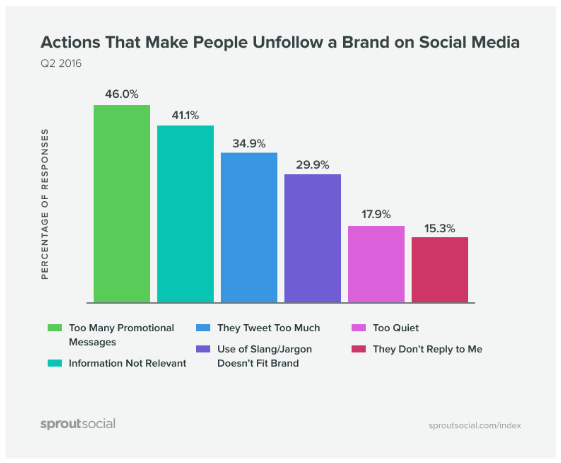
Most of your fans on social media are soft leads. Providing relevant content to build interest will lead to more interactions, and consequently, turn them into hot leads.
As much as you may be busy, it is important that you post on social media when you’re ready to have conversations with your prospects.
Even though social media is people’s top choice for customer care, most companies take an average of 10 hours to reply to messages from prospects — whereas prospects expect a reply within 4 hours.
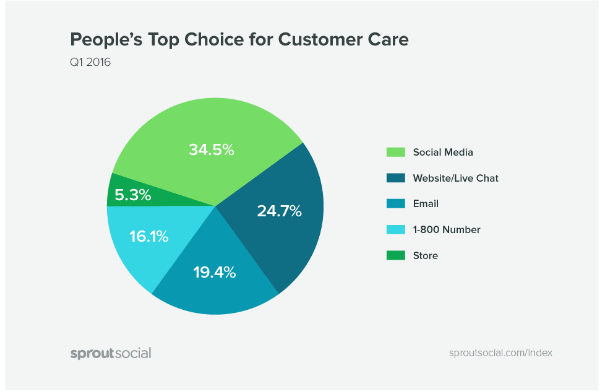
Of course, you can use tools like Sprout Social or Hootsuite to plan and schedule your posts ahead, they’ll also notify you of interactions on your posts so that your sales agents can connect better with your prospects.
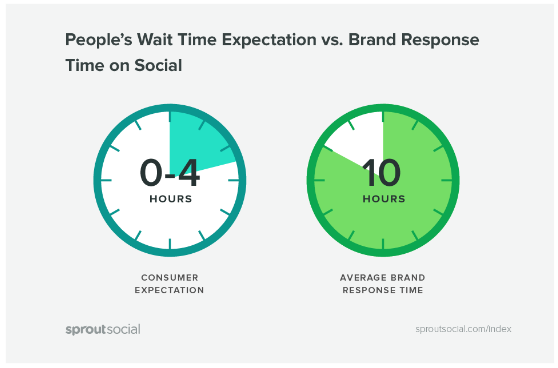
By sharing socially-friendly content pieces, LogMyCalls experienced 400% increase in leads in 90 days.
Step 5. Segment your social media leads to boost conversions
Knowing your prospects more than your competitors is an advantage you must utilize to get more customers. More so, it is important to know that your prospects have different preferences.
For instance, with a CRM tool like Agile CRM, you can track prospect’s behavior on your social media pages.
Below is an example of LinkedIn providing segmentation options for your social media messages.
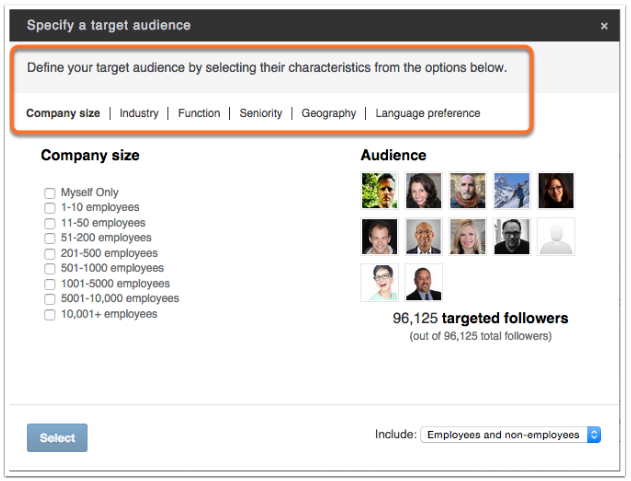
And if you offer more than one product, a CRM system can identify the product a prospect is interested in through your social media content which they have interacted with. This gives you enough information to nurture your leads until they become sales qualified leads (SQL).
Without a powerful CRM system, it can be difficult to segment your social media leads and get information about their behavior on your social media pages.
Step 6. Assess Performance and Offer Feedback
No social selling strategy is perfect. That’s why the final step you must take is to assess employees performance with their sales results through social media.
What’s the performance of each employee in your sales team? This will probably show that some employees failed to achieve needed results with social selling while some achieved higher than the benchmark. This can be assessed when you add a social source of sales opportunities to your CRM.
The main aim of assessing performance is to improve it. When some employees achieve the social selling benchmark, they can be the social selling champion and brief the sales team on how they were able to achieve this feat on social media.
Furthermore, sales training and coaching by social selling experts can be conducted to improve sales team’s performance. Effective training is important because ineffective training can reduce win rates by 7.8% and quota attainment by 7.4%.
When Guardian Life Insurance of America decided to use LinkedIn Sales Navigator as part of their social selling initiative, they also engaged their sales agents in the training which LinkedIn provided. This led to a 56% growth in connections, and a total of $ 21 million in life assurance.

Conclusion
Social selling is the way to go.
Since 70% of sales professionals use social selling tools, making them the most widely used sales technology in today’s competitive marketplace, learning how to use these tools will benefit your business a lot.
With the number of worldwide social media users estimated to reach 2.95 billion people by 2020, every business must embrace social selling to better connect with their target audience and convert them to customers.
In the end, make sure social selling is part of your automation strategy. That way, you’ll get more done by leveraging user data from your marketing automation tool to improve your social selling activities.
Digital & Social Articles on Business 2 Community
(67)



